 Limited Edition Golden Llama is here! Check out how you can get one.
Limited Edition Golden Llama is here! Check out how you can get one.  Limited Edition Golden Llama is here! Check out how you can get one.
Limited Edition Golden Llama is here! Check out how you can get one.
 Offering SPR-BLI Services - Proteins provided for free!
Offering SPR-BLI Services - Proteins provided for free!  Offering SPR-BLI Services - Proteins provided for free!
Offering SPR-BLI Services - Proteins provided for free!
 Here come GMP Grade Cytokines!Free Sample is available!
Here come GMP Grade Cytokines!Free Sample is available!  Here come GMP Grade Cytokines!Free Sample is available!
Here come GMP Grade Cytokines!Free Sample is available!
> Star Staining Fluorescent-labeled Products New Generation Tools for CAR Detection

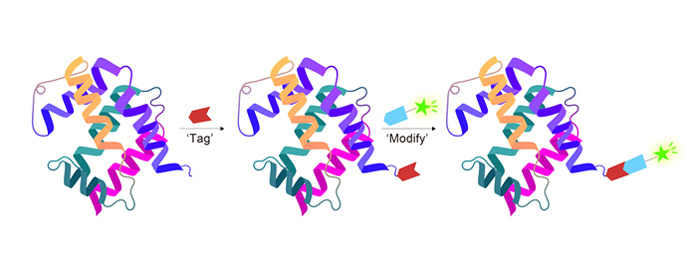
ACROBiosystems is striving for developing the high-standard detection reagents to support the development of CAR-T cell therapy. After years of research and experience by our technicians, we successfully established the "Star Staining" site-specific labeling platform and developed a series of exclusive fluorescent-labeled proteins with "Star Standard" quality. "Star Staining" products can be the powerful tools for detecting and monitoring CAR-T cells in clinical trials.
![]() Using new-generation site-specific labeling technology to maintain natural bioactivity
Using new-generation site-specific labeling technology to maintain natural bioactivity
![]() High specificity and sensitivity verified by flow cytometry
High specificity and sensitivity verified by flow cytometry
![]() No non-specific binding to non-transduced PBMCs
No non-specific binding to non-transduced PBMCs
![]() High batch-to-batch consistency and uniformity
High batch-to-batch consistency and uniformity
FITC
PE
APC
Alexa Fluor 647
Alexa Fluor 555
Alexa Fluor 488
| Molecule | Cat. No. | Product Description | Preorder/Order |
|---|
| Molecule | Cat. No. | Product Description | Preorder/Order |
|---|
| Molecule | Cat. No. | Product Description | Preorder/Order |
|---|
| Molecule | Cat. No. | Product Description | Preorder/Order |
|---|
| Molecule | Cat. No. | Product Description | Preorder/Order |
|---|
| Molecule | Cat. No. | Product Description | Preorder/Order |
|---|
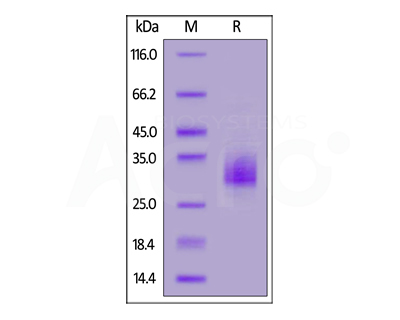
FITC-Labeled Human BCMA, His Tag (Cat. No. BCA-HF2H3) on SDS-PAGE under reducing (R) condition. The gel was stained overnight with Coomassie Blue. The purity of the protein is greater than 90%.
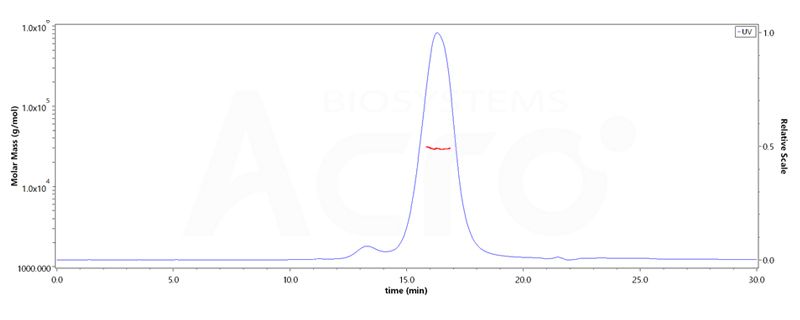
The purity of FITC-Labeled Human BCMA, His Tag (Cat. No. BCA-HF2H3) is more than 90% and the molecular weight of this protein is around 24-34 kDa verified by SEC-MALS.


Binding activity of FITC-Labeled Human BCMA and CD19 protein from two different vendors were evaluated by the FACS analysis. The result showed that ACRO's Star Staining FITC-Labeled Human BCMA (Cat. No. BCA-HF2H3) and CD19 (Cat. No. CD9-HF2H3) protein have a much higher binding activity than that of the other competitor.

The activity of Alexa Fluor 647-Labeled Human Mesothelin (296-580), His Tag (Cat. No. MSN-HA2H5) was higher than other Competitor.
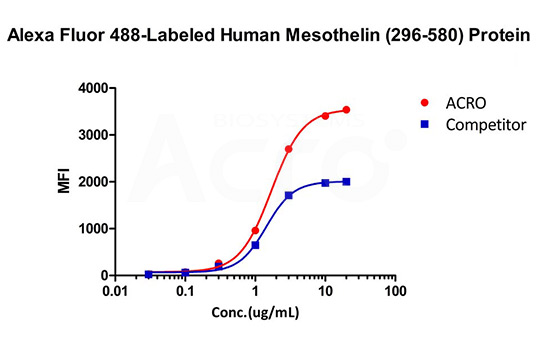
The activity of Alexa Fluor 488-Labeled Human Mesothelin (296-580), His Tag (Cat. No. MSN-HA2H9) was higher than other Competitor.

Anti-CD19 CAR-293 cells were stained with PE-Labeled Human CD19 (20-291) Protein (Cat. No. CD9-HP2H5), His Tag star staining and negative control protein respectively, PE signal was used to evaluate the binding activity.

Anti-CD19 CAR-293 cells were stained with APC-Labeled Human CD19 (20-291) Protein (Cat. No. CD9-HA2H9), His Tag star staining and negative control protein respectively, APC signal was used to evaluate the binding activity.

Non-specific binding to non-transduced PBMCs between PE-Labeled Human BCMA Protein of Acro and competitor. 5e5 of non-transduced PBMCs were stained with PE -Labeled Human BCMA Protein and anti-CD3 antibody, washed and then analyzed with FACS. FITC signal was used to evaluate the expression of CD3+ T cells in non-transduced PBMCs, and PE signal was used to evaluate the non-specific binding activity to non-transduced PBMCs.

Non-specific binding to non-transduced PBMCs between FITC-Labeled Human BCMA Protein of Acro and competitor. 5e5 of non-transduced PBMCs were stained with FITC-Labeled Human BCMA Protein and anti-CD3 antibody, washed and then analyzed with FACS. PE signal was used to evaluate the expression of CD3+ T cells in non-transduced PBMCs, and FITC signal was used to evaluate the non-specific binding activity to non-transduced PBMCs.

Binding activity of the Human BCMA before and after FITC labeling was evaluated in the above FACS analysis. The result shows that FITC-Labeled BCMA (Cat. No. BCA-HF2H3) and unconjugated Human BCMA have almost the same level of binding activity.


Binding affinity of the Human BCMA before and after FITC labeling was evaluated in the above SPR analysis (Biacore T200). The result shows that FITC-Labeled (Cat. No. BCA-HF2H3) and unconjugated Human BCMA, His Tag have almost the same level of affinity.

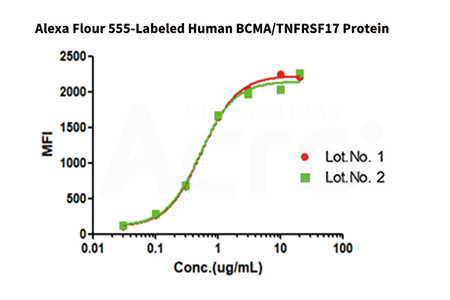

Binding activity of different lots of FITC-Labeled Human BCMA (Cat. No. BCA-HF2H3) , AF555-Labeled Human BCMA (Cat. No. BCA-HA2H6) and PE-Labeled Human BCMA (Cat. No. BCA-HP2H7) against anti-BCMA CAR-293 cells was evaluated by flow cytometry. The result shows very high batch-to-batch consistency.
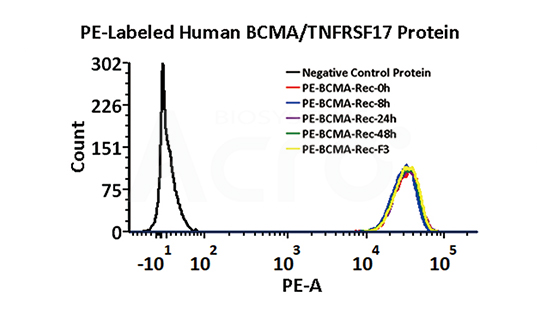
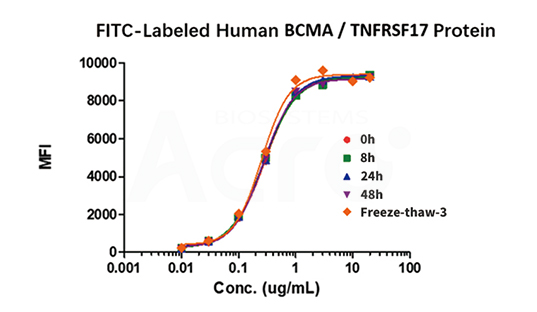
PE-Labeled Human BCMA (Cat. No. BCA-HP2H7) and FITC-Labeled Human BCMA (Cat. No. BCA-HF2H3) 25℃ for 48 hours and freeze-throw cycles are stable without performance reduction.

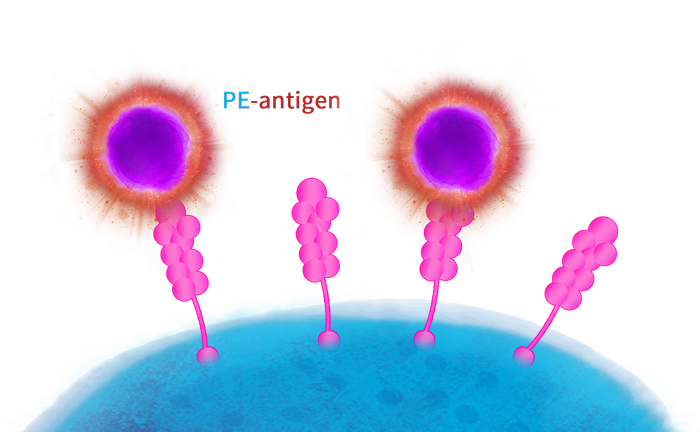
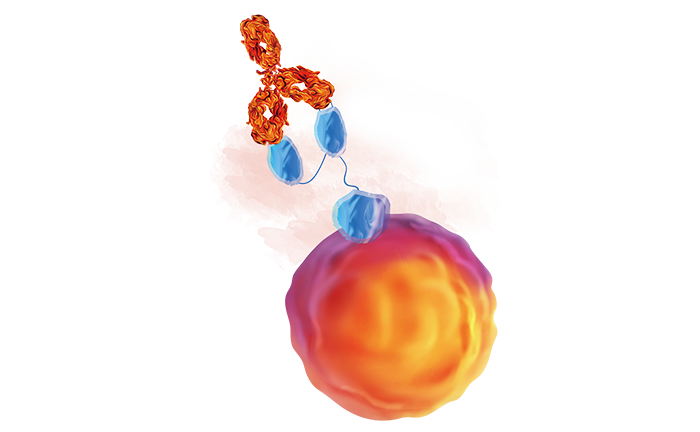

This web search service is supported by Google Inc.
